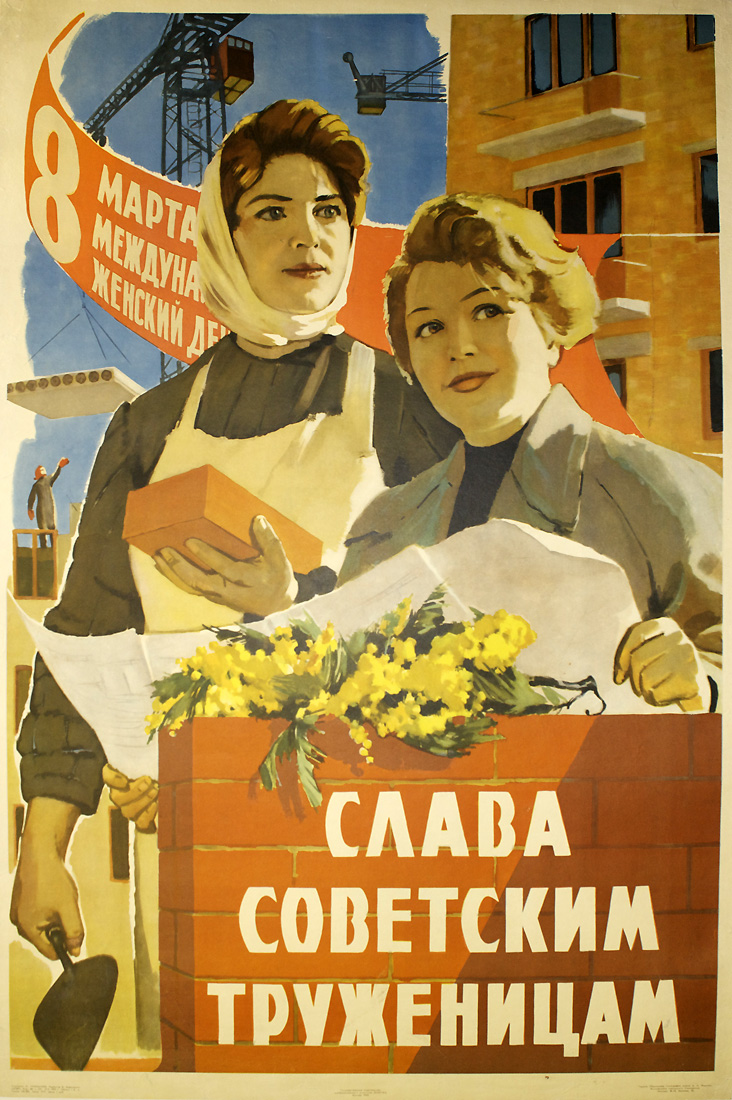
¡Gloria a las mujeres trabajadoras soviéticas!
Número de Cartel: PP 183
Información sobre el cartel: (En la pancarta) “8 de Marzo, Día Internacional de la Mujer”
Tamaño: 41x30.5
Tipo de cartel: Offset
Fecha de publicación: 1960
Editores: Editor Y. Marinenko
Información técnica: [Approved] October 27, 1959; Publication No. 1-231; Volume 1 sheet of paper; Order No. 3717; Price 1 ruble
Ediciones: 150,000
Número de Glavlit: Sh07883
En el catologo: PP 183 Women
Artista: Grinshtein, Isaak Khaskelevich — Гринштейн, Исаак Хаскелевич
Isaak Khaskelevich Grinshtein was a Soviet graphic artist, illustrator and book designer. He was born in what is today Eastern Ukraine. Grinshtein studied at the Art Institute of Odessa from 1925 to 1930 and after graduation, he was a school teacher (until 1933) whereupon he moved to Moscow. Having a background in graphic art, Grinshtein worked extensively designing for Ogonek [Campfire], Smena [Change], Molodoi kolkhoznik [Young Collective Farmer], and other major Soviet monthlies. In addition to his...
Leer más...
Imprenta: 1st Exemplary Typography Workshop named for A. A. Zhdanov, Moscow — 1-я Образцовая типография им. А.А. Жданова
The 1st Exemplary Typography Workshop was named in honor of Andrei Alexandrovich Zhdanov (1896-1948), a Soviet military leader and a senior member of the Politburo who died in 1948. Reportedly, Andrei Zhdanov controlled the atomic espionage division of the USSR and he was Josef Stalin's closest confidant. Historically, the 1st Exemplary Typography Workshop began as the Sharapov-Sytin Partnerhip, a printing workshop formed before the Russian Revolution. Ivan Dmitrievich Sytin (1851-1934) was the son of a peasant. ...
Leer más...
Editorial: IzoGiz (State Publishing House of Fine Art), Moscow — Изогиз (Государственное издательство изобразительного искусства), Москва
The history of IzoGiz begins with the formation of Ogiz, the Association of the State Book and Magazine Publishers. In 1930, the Sovnarkom of the Russian Socialist Federative Soviet Republic established Ogiz to centralize publishing under a monopoly in order to eliminate duplication of printed material, to streamline and control publishing production and its output, and to create a base for marketing books, training and technical manuals. In 1931, the Central Committee of the USSR ordered certain ...
Leer más...